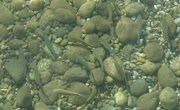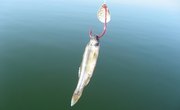Items you will need
10 mature female blue crabs (inseminated)
1 m3 tank (2)
Sand
4 mechanical filtration systems and bio-filters
400 L hatching tank
Cylindrical 500 L tank
Cylindrical 2,000 L tank
Rotifers
3 125 ?m mesh filters
Beaker
Dropper
Blue crabs (Callinectes sapidus) have long been considered a delicacy on the Eastern coast of the United States. Sadly, as a result of decline and pollution in the Chesapeake Bay, fishing for wild blue crabs off the coast has become difficult. Some U.S. restaurants and crab suppliers have turned to Asian hatcheries, but scientists from the University of Maryland and reporters from the Baltimore Sun and Science Daily have discovered that it's possible to farm and raise blue crabs in fresh water.
Prepare Larvae for Hatching
Place a 2-inch layer of sand on the bottom of the 1 m3 tank. Fill the tank with clean freshwater and add sea salt to create a salinity level of .3 parts per thousand. Install one mechanical filtration system to filter crab waste in the tank. Place 10 inseminated female crabs in the tank and monitor for fighting. Feed the female crabs a small handful of food pellets (about five or six) per crab once a day. Monitor the egg mass that appears on the crabs' abdomens.
Place a 2-inch layer of sand on the bottom of the 400 L tank. Fill the tank with freshwater and add salt to create a salinity level of .3 parts per thousand. Install one mechanical filtration system to filter crab waste in the tank. When the egg mass appears strained and ready to hatch, transfer the female crabs to the 400 L tank. Secure the 125 ?m mesh filters in each larvae tank, so the larvae aren't filtered out with waste. After hatching, larvae will float to the top of the tank water.
Place sand on the bottom of the 500 L and 2,000 L tank to create a layer about 2 inches thick. Fill the 500 L and 2,000 L tanks with freshwater and add salt to create a salinity level of .3 parts per thousand. Install one mechanical filtration system to filter crab waste in each tank. Collect the larvae in 25 ml samples with the eyedropper and beaker and transfer 38 to 138 25 ml samples per L in the large 500 L and 2,000 L tanks.
Maintain Crabs
In a few months, as the crabs mature, feed them shredded shrimp pellets and fish food.
Feed the crab larvae 50 mg of rotifers (free-swimming plankton) per liter once a day. Crabs will begin to noticeably mature in 44 to 55 days.
Monitor small crabs for aggression and cannibalism and separate them inside the tanks as needed.
Remove mature crabs from the tanks and eat or sell them.
Tips
References
Tips
- In a few months, as the crabs mature, feed them shredded shrimp pellets and fish food.
Writer Bio
Aurora Porter began writing professionally in 2009. Her articles have appeared in "The Daily Texan" and she has produced web and video content for Urban Roots, a sustainable farming nonprofit in Austin. Porter has a bachelor's degree in multimedia journalism from the University of Texas-Austin.



